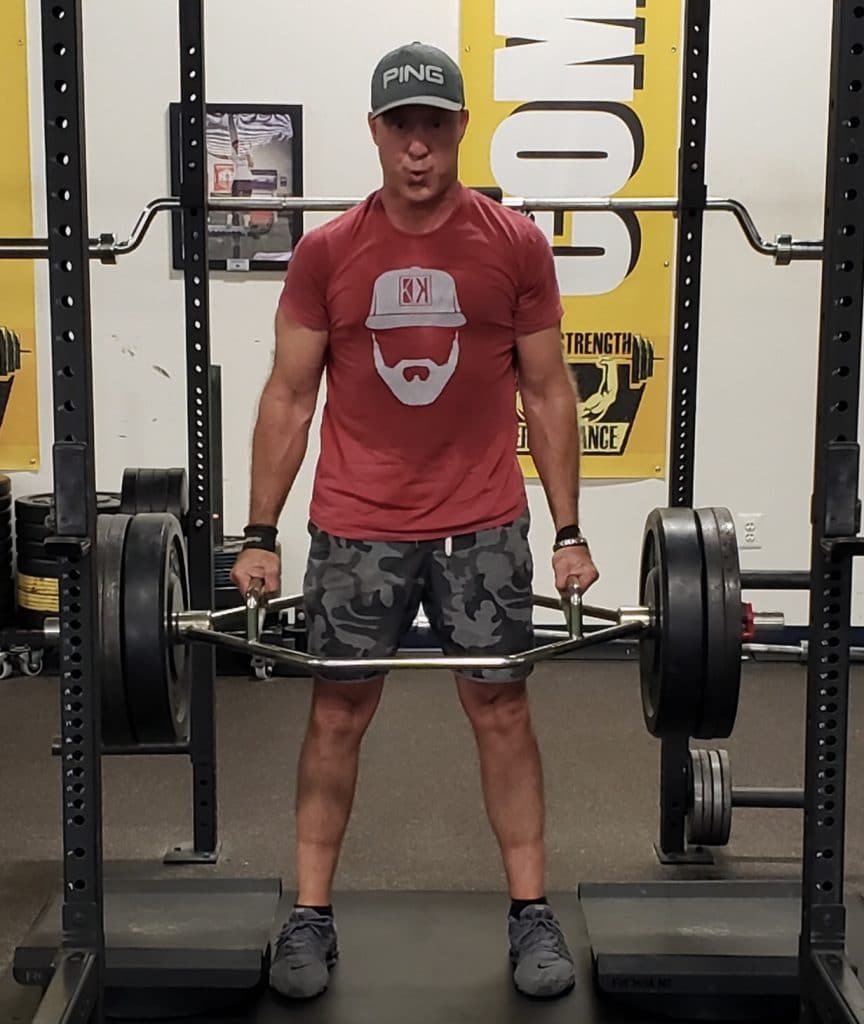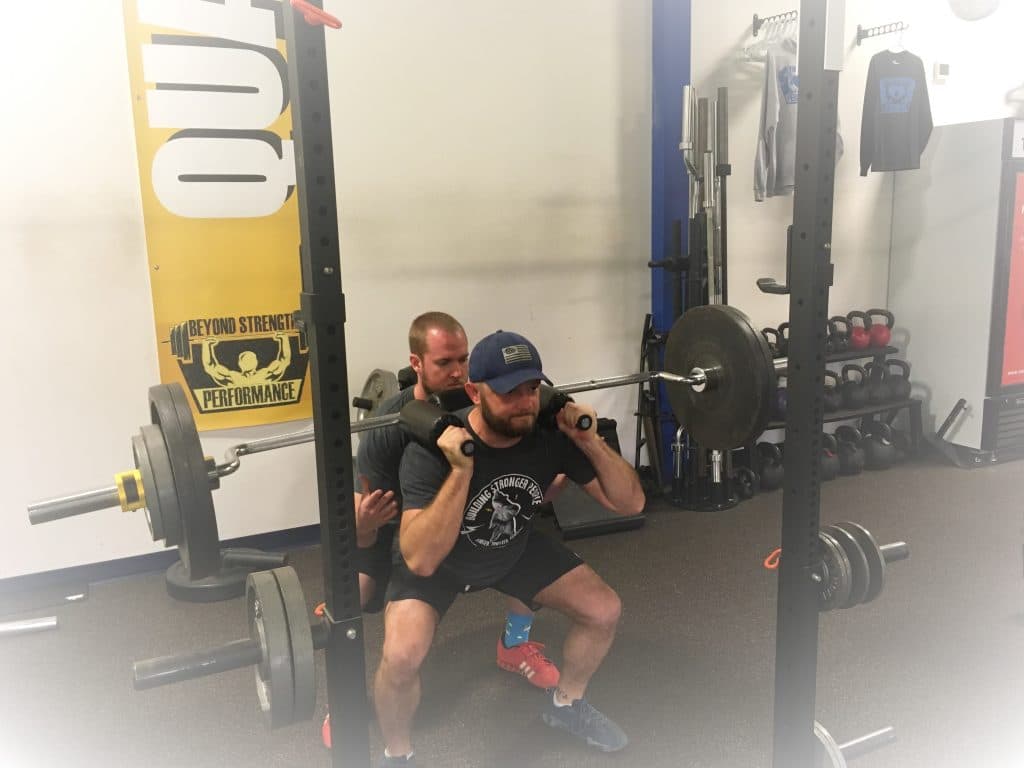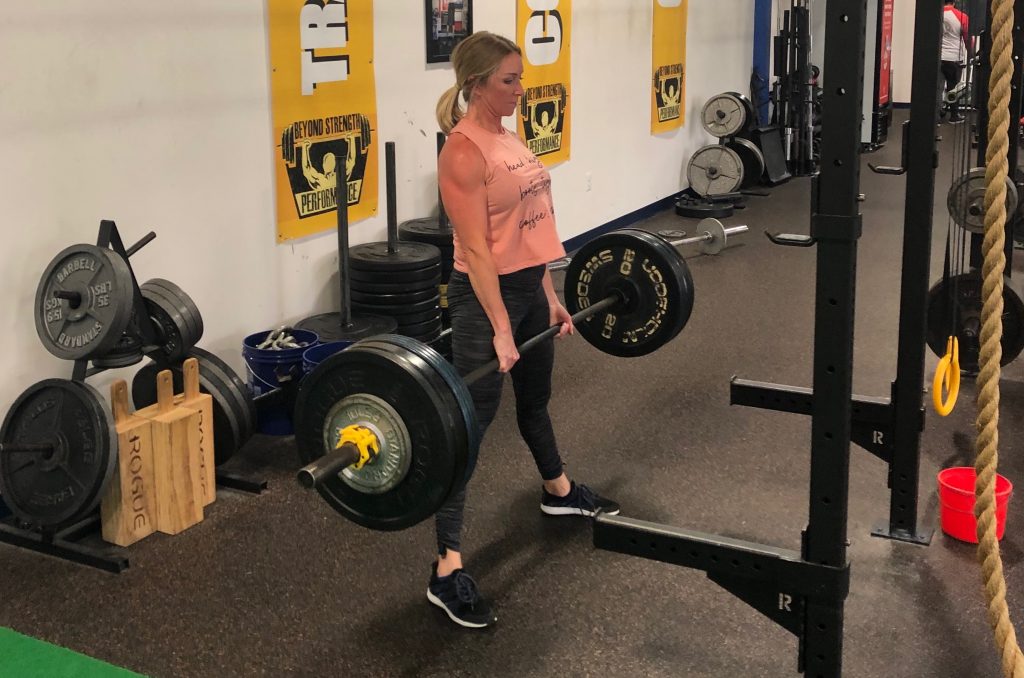A few weeks ago, I had someone ask me why their program was written as a full-body routine, instead of a body-part routine. This client had experience with strength training, but in the form of body part splits, so it was a fair question to ask.
Before we get into the nitty-gritty details of why full-body routines are beneficial though, I want to answer a question: what does a body-part routine look like?
While there are numerous ways to do this type of routine, here is one example:
- Day 1: chest and triceps
- Day 2: legs
- Day 3: back and biceps
- Day 4: shoulders and core
A full-body routine differs in that—well—we train the full-body that day; instead of focusing on chest and triceps only for example. A full-body routine may have someone doing Front Squats (lower body push movement) and Inverted Rows (upper body pull), followed by Barbell RDL’s (lower body pull movement) and Dumbbell Chest Presses (upper body push).
Those distinctions make sense? Cool.
Let’s move on to the reasons we program full-body routines for the majority of members at BSP NOVA:
- They allow us to accomplish more with less time
- They allow us to train muscle groups more frequently than body-part routines do

A Full-Body Routine Helps Us Get More Out of Each Session
Most members at BSP NOVA strength train 2 days per week, on average. Because of this, we would be doing them a disservice to do body-part routines. Let’s talk about three solid reasons why.
First, sessions for Small Group Personal Training at BSP NOVA are roughly an hour, so, given that most members strength train for two hours a week, we must be mindful of giving them things that will make the best use of that hour. Full-body routines allow our members to do more work in less time when compared to body-part routines.
Second, compound movements, like squats, utilize more musculature than a single joint exercise, like leg extensions, which means we can train more muscle groups in the same amount of time using full-body routines.
Lastly, body-part routines don’t always include things such as power training or conditioning.

Let’s continue with the squats vs leg extensions example above. When performing leg extensions we use primarily our quadriceps to extend our knee; but, while we also use our quadriceps when performing Zercher Squats, our hips, calves, hamstrings, and core are trained too. If someone only had one hour to train that day, then doing a few sets of squats will utilize more muscles for that given time, thus giving a better training effect overall.
As for the third reason above, it’s rare to focus on creating power, viewing things at a body-part level—doing biceps curls, for example. With nearly all the power exercises we use—medicine ball throws, different variations of jumps, Olympic lifts—the outcome is usually full-body power, or at least, more than one muscle group being involved. And this is incredibly important, as our ability to create power and absorb force (hello, slip and falls) diminishes as we age.
Simply put: full-body routines allow us to do more work in less time, and focus on other qualities than just muscle size or strength—like body-part routines mostly focus on.
A Full-Body Routine Increases Training Frequency
In general, following a training session, your muscles recover within a couple days. Why does that matter? Because, if we’re able to train a muscle more often, and we don’t, then we’re not making as much progress as we could potentially make.
Take the leg extension example from earlier—where that was done once a week on the body-part routine–the quadriceps would have recovered after a few days. By training them more frequently, it’s likely that more lean muscle could be built, and more strength could be gained.
Let me pause here—briefly—because I can hear some of you thinking,
“My goal is fat loss. I don’t care about building muscle quicker, or about getting stronger.”
While you’re goal is not building muscle or strength, I want you to consider a few things related to your goal of fat loss:
a) muscle is more metabolically active—meaning it burns more calories at rest—which aids in creating a caloric deficit (this is needed to lose body fat);
b) related to the last point, you lose roughly 2-4% of your Resting Metabolic Rate each decade—so, maintaining or creating lean muscle becomes more important as you age to keep your metabolism faster;
c) lastly, having muscle mass is what helps you look “toned,” because muscle mass gives your frame definition.

Conclusion: It’s not that body-part routines are bad…
Remember, body-part routines aren’t bad; they can be useful depending on your goals and time available to train. If you’re strength training 2-3 times a week though, then doing full-body splits will allow you to get the most out of each training session. Plus, by training your muscle groups more frequently, it will lead to quicker progress over time than focusing on body parts alone.
